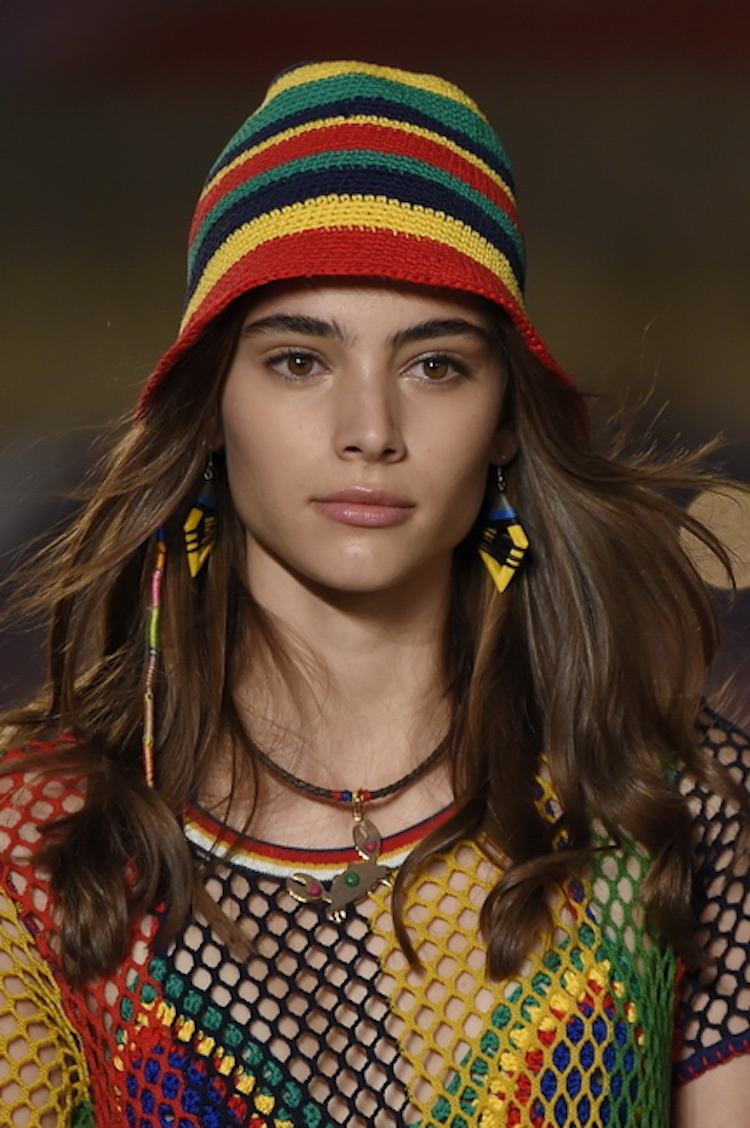This story appeared in the April issue of VICE magazine. Click HERE to subscribe.
When I was a teenager who dressed solely in Gap Kids (past the age when that could ever be deemed “cool”), I would cut out images from magazines and tack them in collaged shrines to fashion on my bedroom walls. One of these works starred an oiled-up Amazonian woman in a fur hat and a red, gold, and green striped bikini. She looked ridiculous, even to my starry 14-year-old eyes, but also ridiculously glamorous. This, I know now, was the model Gisele Bündchen, in an ad for Dior’s Rastafari-inspired 2004 capsule collection.
Recently, on an internet deep dive into John Galliano’s early-2000s collections for Dior (which walk the line between dangerous and brilliant), I came across this image again, as well as Dior’s entire oeuvre of Rasta-striped accessories. There are red, gold, and green striped kitten heel mules, saddlebag purses, and, perhaps most improbably, quilted snow boots. There is also a red, gold, and green Dior snowboard for sale on eBay (was this a Cool Runnings-style joke?). The more I googled, the clearer it became that 2004 was a very different era in fashion: a sort of Wild West for cultural grab bagging.
On TV, 2004 was the final year of Dior fan Carrie Bradshaw’s wild (and sometimes wincingly appropriative) forays into fashion in Sex and the City and also the year teen queen Marissa Cooper of The O.C. wore one of Galliano’s Rasta-inspired Dior bags. Seeing colors that represent a religion intrinsically opposed to commercial excess flaunted by a wealthy high schooler in early- 2000s Orange County is like hearing reggae music in Babylon.
Fashion has a bad track record of uprooting ideas from a range of different cultures and expecting them to flourish in new con- texts; time and time again, designers have used Rasta colors, with their connotations of reggae, Jamaica, and good vibes, to conjure Caribbean fantasies. Last year, Tommy Hilfiger sent models down the runway in crocheted hats with red, gold, black, and green stripes. Gwen Stefani, who wears a Rasta-striped beret and scarf in the video for the reggae-inflected 2002 No Doubt track “Underneath It All,” riffed on Rasta colors in her spring 2006 L.A.M.B. collection. Christian Louboutin has designed a high- heeled sandal, which Rihanna often wears, that has a strap of red, green, and gold beads across the foot.
Red, gold, black, and green are the universal colors of Rastafari, a combination of the colors of the Ethiopian flag and those of Marcus Garvey’s Pan-Africanist movement. In the years following the coronation of Emperor Haile Selassie in 1930 — Rastafarians believe Selassie to be the messiah who will lead the African people to freedom — these four colors became synonymous with this new religion. When the movement gained global attention in the 1970s, thanks partly to the popularity of reggae artists like Bob Marley and Peter Tosh, the colors (which symbolize the blood of martyrs, the natural beauty of Jamaica, and the wealth of Ethiopia) also took on new meanings that resonated with the times: love, consciousness, and free use of marijuana (which is holy in Rastafari).
In 2017, when so many tenets of Rastafari — healthy eating, ethical awareness, and legalized weed smoking — are gaining traction in our generation, it’s easy to see why the movement is attractive to new audiences. The difference now (post Galliano’s public reckoning in 2011) is that we are becoming, fittingly, more conscious about how we wear that interest.
Credits
Text Alice Newell-Hanson
Photography Mitchell Sams
